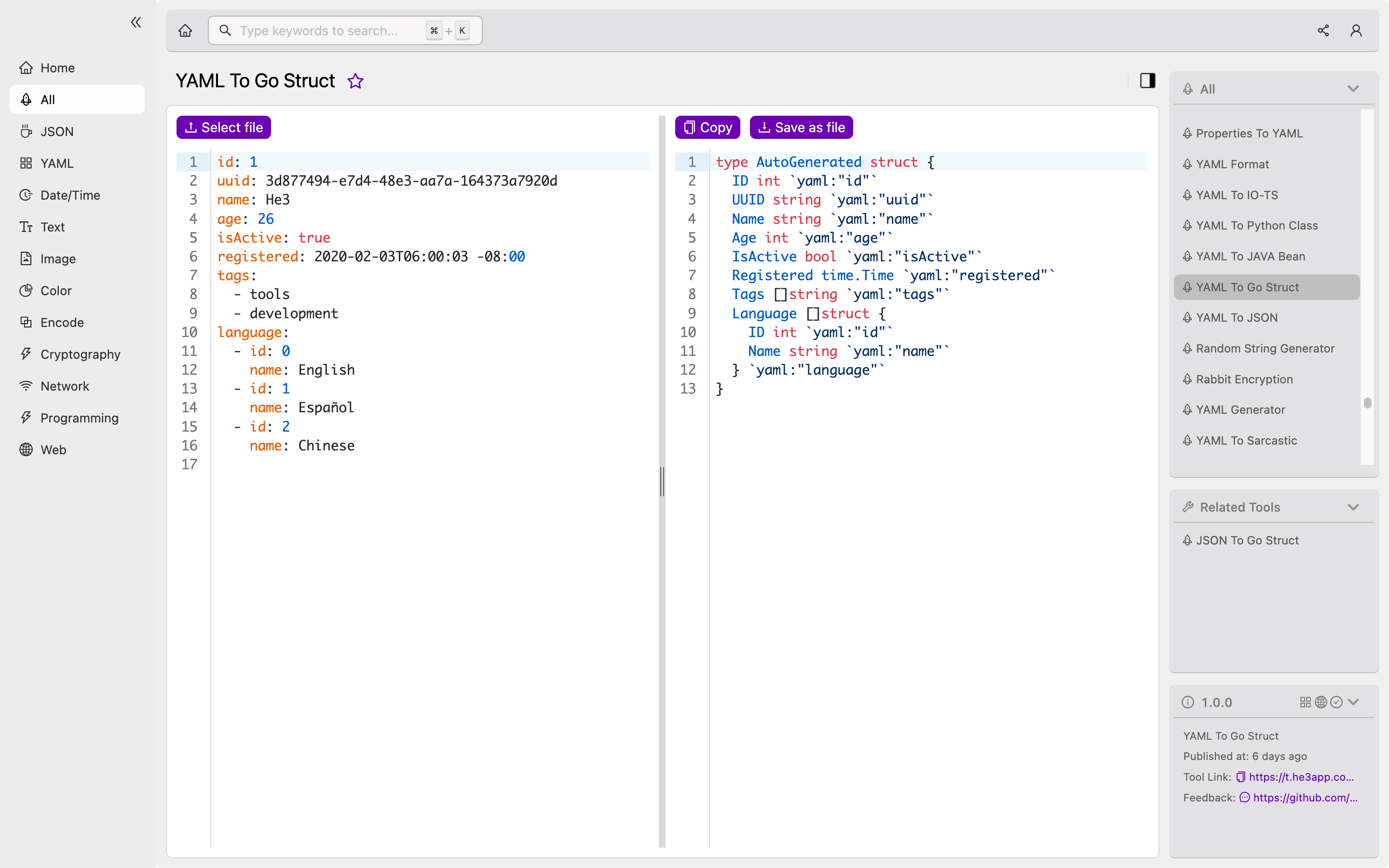YAML To Go Struct is a tool that helps developers convert YAML data into Go structs. This process is commonly used during application development, as YAML files that store configuration data have become a standard way of handling settings for applications. In this article, we will explore the concept, how it works, key features, scenarios, misconceptions, and frequently asked questions about YAML To Go Struct.
How It Works
YAML To Go Struct takes a YAML file and converts it into a Go struct. It works by generating Go code that represents the YAML data structure, allowing developers to easily interact with the data in their applications. The tool reads the YAML file and uses reflection to create the Go struct. This process allows developers to access the data stored in the YAML file as if it were part of their code, simplifying the interaction with it.
To use the tool, developers can either use a command-line interface or a web-based application. One of the most popular tools that leverage YAML To Go Struct is He3 Toolbox. Using this tool, developers can convert YAML files into Go structs with just a few clicks, as well as perform other operations such as data visualization, exploration, and analysis. Or you can use YAML To Go Struct tool in He3 Toolbox (https://t.he3app.com?llgr) easily.

Key Features
YAML To Go Struct has several key features that make it a go-to tool for developers:
- Easy conversion of YAML data to Go structs
- Command-line interface for automated conversion
- Web-based interface for easy and quick conversion
- Support for multiple data formats
- Reflection-based struct creation
- Compatible with Go 1.10 and above
Scenarios
As mentioned earlier, using YAML for storing configuration data is a common practice in software development. Typically, configuration data is stored in a YAML file and read into the application at runtime. YAML To Go Struct is instrumental in making it easier to interact with configuration data stored in YAML files. Additionally, developers can use the tool to convert any YAML file they find into Go structs for better access and integration into their applications.
Misconceptions and FAQs
Despite its popularity, YAML To Go Struct has a few misconceptions associated with it. One common misconception is that it only works with small YAML files. However, the tool can handle YAML files of any size.
Another misconception is that the tool can replace a JSON parser. This is not entirely true as YAML To Go Struct is specifically designed to convert YAML data to Go structs, while a JSON parser works with JSON data.
Some FAQs about the tool that developers ask include:
- What Go versions are supported? YAML To Go Struct is compatible with Go 1.10 and above.
- Is there a limit to the size of the YAML file? No, the tool can handle YAML files of any size.
- Can YAML To Go Struct work with other data formats apart from YAML? Yes, the tool also supports JSON and TOML data formats.
Conclusion
YAML To Go Struct is a must-have tool for developers that work with configuration data stored in YAML files. It simplifies the process of accessing and integrating the data with their applications, saving development time and eliminating the need for manual conversion. YAML To Go Struct is an essential tool that developers should add to their toolkit.
Wikipedia Links: YAML, Go programming language
